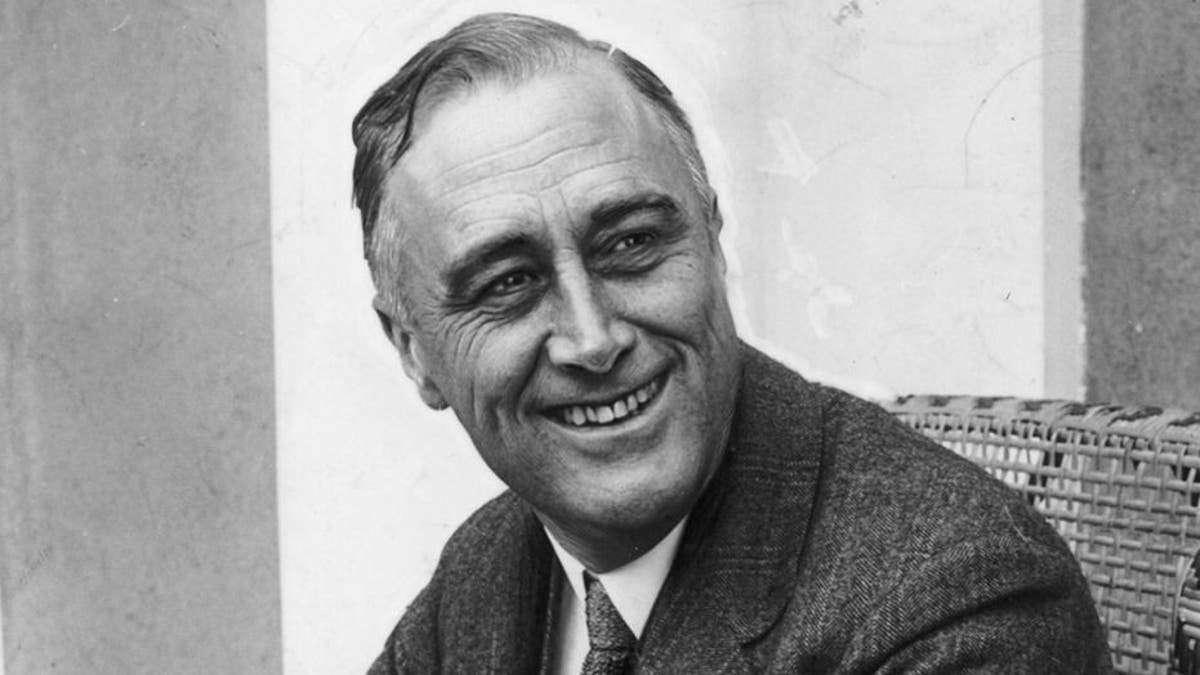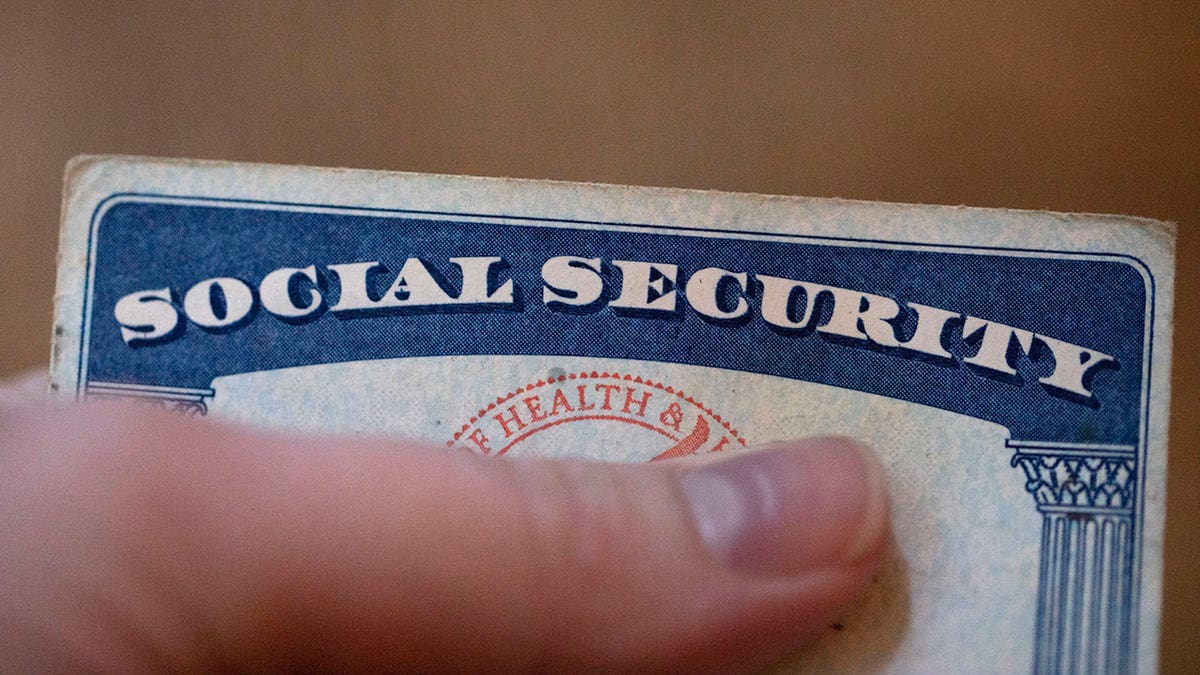US Social Security benefits at risk in 10 years due to funding shortage: Maya MacGuineas
Committee for a Responsible Federal Budget president Maya MacGuineas calls on lawmakers to stop 'running away' from the truth and consider Social Security funding options on 'Your World with Neil Cavuto.'
President Franklin D. Roosevelt, the 32nd president, signed the Social Security bill into law on this day in history, Aug. 14, 1935.
He did so a mere 14 months after he sent a special message to Congress on June 8, 1934, that promised a plan for social insurance as a safeguard "against the hazards and vicissitudes of life," according to the official website of the Social Security Administration.
The Social Security Act created a federal safety net for elderly, unemployed and disadvantaged Americans, noted History.com.
ON THIS DAY IN HISTORY, AUGUST 13, 2004, ICONIC AMERICAN CHEF JULIA CHILD DIES
"The main stipulation of the original Social Security Act was to pay financial benefits to retirees over age 65 based on lifetime payroll tax contributions," said the same source.
"The Act also established the Social Security Board, which later became the Social Security Administration, to structure the Social Security Act and figure out the logistics of implementing it."

President Franklin D. Roosevelt signed the Social Security Bill into law on Aug. 14, 1935. It established two types of provisions for financial security for those in their advanced years. The act has been amended over the years. (Getty Images)
The 32-page act of legislation was the culmination of work begun by the Committee on Economic Security, created by FDR on June 29, 1934.
It became, as he said at the signing ceremony, "a cornerstone in a structure which is being built but is by no means complete," said the Social Security Administration.
The Social Security Act established two types of provisions for old-age security, the SSA said:
- Federal aid to the states to enable them to provide cash pensions to their needy aged;
- A system of federal old-age benefits for retired workers
After successfully signing the Social Security Act, FDR established a three-person board to administer the program with the goal of starting payroll tax deductions for enrollees.
ON THIS DAY IN HISTORY, MARCH 12, 1933, FDR GIVES HIS FIRST ‘FIRESIDE CHAT’
It was a daunting task, but by November 1936 registration for the program began, recounted History.com.
At the time, not everyone could participate. Self-employed professionals, field hands and domestic workers were excluded, the same source added.

The Social Security card was — and still is — used to track workers' earnings and benefits. (Kevin Dietsch/Getty Images)
To become eligible at that time, workers completed an application at their local post office and received a national identity card, which continues to be known as a Social Security card, with a unique, nine-digit identification number.
The Social Security card was — and still is — used to track workers' earnings and benefits, History.com indicated.
The Social Security Act was amended several times.
On Jan. 31, 1940, Ida M. Fuller became the first person to receive a monthly benefit. Her first check was for $22.54, the inflation-adjusted equivalent of $420.15 today. Fuller lived to the age of 100.
In 1939, amendments added child, spouse and survivor benefits to the retirement benefits authorized by the 1935 Act, according to the Social Security Administration's Social Security Bulletin.
ON THIS DAY IN HISTORY, FEB. 5, 1937, FDR ANNOUNCES PLAN TO PACK THE SUPREME COURT
On Jan. 31, 1940, Ida M. Fuller became the first person to receive a monthly benefit.
Her first check was for $22.54, the inflation-adjusted equivalent of $420.15 today.
Fuller lived to the age of 100, according to AARP.

During the 1960s, there was additional growth in Social Security, with the creation of the Medicare program in 1965. (AP Photo/Jenny Kane, File)
The 1950s were a transformational decade in the program's history: Benefit amounts were increased substantially, coverage under the program became close to universal, and a new disability insurance benefit was offered, the Social Security Bulletin noted.
During the 1960s, there was additional growth in Social Security, with the creation of the Medicare program in 1965.
The program continued to evolve.
On Oct. 30, 1972, Congress established Supplemental Security Income (SSI), a national benefit program administered by Social Security that provides monthly cash payments to older, blind and disabled people with very low incomes and limited assets, according to AARP.
About 66 million people, or about one in every five U.S. residents, collected Social Security benefits in February 2023.
Eventually, the Social Security statement became available online, starting on May 1, 2012, after most paper statements stopped being mailed out in 2011.
ON THIS DAY IN HISTORY, AUG. 2, 1939, FDR SIGNS THE HATCH ACT INTO LAW
"Today, paper statements are automatically mailed only to workers 60 and over who are not yet collecting benefits and who have not set up an online via the Social Security account website," according to AARP.
About 66 million people, or about one in every five U.S. residents, collected Social Security benefits in February 2023, according to the Center of Budget and Policy Priorities, a nonpartisan research and policy institute that advances federal and state policies.

"Social Security benefits for retirees and others are primarily paid for through payroll taxes on current workers, and are supplemented by a trust fund." (iStock)
"While older adults make up about 4 in 5 beneficiaries, the other one-fifth of beneficiaries received Social Security Disability Insurance (SSDI) or were young survivors of deceased workers," the same source stated.
A Social Security trust fund is expected to run short of cash by 2033, according to multiple sources — which would potentially reduce benefits to millions of Americans who depend on the program.
"The Social Security program is expected to run short of cash to pay promised benefits in about 10 years," according to forecasts reported by NPR.
"As aging baby boomers retire, there are fewer workers paying into the program to support the rising cost of benefits."
"Social Security benefits for retirees and others are primarily paid for through payroll taxes on current workers, and are supplemented by a trust fund," the same source said.
CLICK HERE TO SIGN UP FOR OUR LIFESTYLE NEWSLETTER
The primary challenge for Social Security is a demographic issue, multiple sources say.
"As aging baby boomers retire, there are fewer workers paying into the program to support the rising cost of benefits," said NPR.
CLICK HERE TO GET THE FOX NEWS APP
"As of last year, there were just 2.7 workers paying into the system for each person drawing Social Security benefits."

